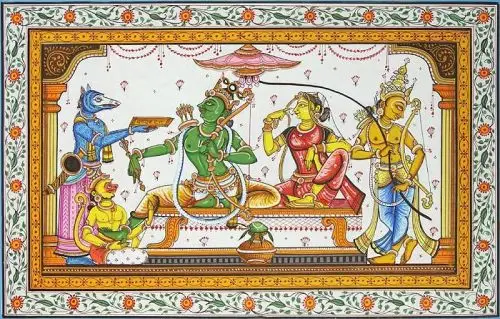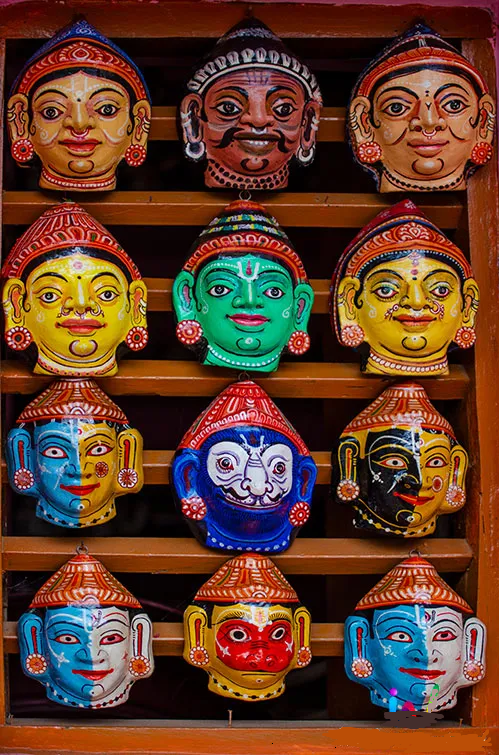Pattachitra is a traditional form of painting from the state of Odisha, India. It is one of the oldest and most intricate forms of art, renowned for its depiction of mythological stories, religious themes, and elaborate motifs. The name “Pattachitra” comes from the Sanskrit words “Patta” (meaning cloth) and “Chitra” (meaning painting), so it literally translates to “painting on cloth.”
Key features of Pattachitra art include:
1. Material and Technique:
- Pattachitra paintings are traditionally done on cloth, though they can also be created on dried palm leaves or other surfaces. The cloth used for Pattachitra is often handwoven and is prepared with a layer of natural adhesive made from tamarind seeds and other ingredients to give it a smooth, durable surface.
- The artists use natural pigments and colors derived from minerals, plants, and other organic sources. These paints are applied using brushes made from tamarind or other fine materials, with great attention to detail and precision.
2. Themes:
- Pattachitra paintings often feature mythological stories, particularly from Hindu epics such as the Mahabharata, Ramayana, and tales related to Lord Jagannath, a central deity of Odisha. They depict scenes from these epics, including divine figures, celestial beings, and various mythological events.
- The paintings may also showcase intricate depictions of gods and goddesses, such as Lord Vishnu, Lord Shiva, Goddess Durga, and more.
3. Artistic Characteristics:
- Ornate Borders: The paintings are characterized by their intricate borders, which are usually decorated with floral or geometric patterns. The borders often frame the main story or deity depicted in the central portion of the painting.
- Symbolism: The artworks are rich in symbolism, with specific colors, motifs, and compositions used to convey deeper meanings. For example, each deity may be represented by specific colors, attributes, and poses that signify their powers or roles.
- Fine Detailing: Pattachitra paintings are known for their elaborate detailing, often showing multiple figures in a single frame, all with delicate and precise outlines.
4. Religious and Cultural Importance:
- Pattachitra paintings hold deep religious and cultural significance, especially in the context of the Jagannath Temple in Puri. They are often used to decorate the temple walls or are created as offerings to the deities.
- They are also used in the making of sacred cloth scrolls known as Patta (from which the name Pattachitra is derived), which are displayed during religious festivals or processions.
5. Modern Adaptations:
- While traditional Pattachitra painting continues to be practiced in Odisha, modern artists have begun to experiment with new materials, themes, and techniques, expanding the appeal of the art form. Some contemporary Pattachitra artists incorporate modern elements while staying true to the core of the traditional style.
6. Recognition:
- Pattachitra has gained recognition as one of the major traditional art forms of India. In 2014, it was awarded the Geographical Indication (GI) tag, which helps protect its traditional techniques and authenticity.
Pattachitra art continues to be cherished for its rich cultural heritage and its ability to convey stories through vibrant, intricate, and visually compelling artworks.


